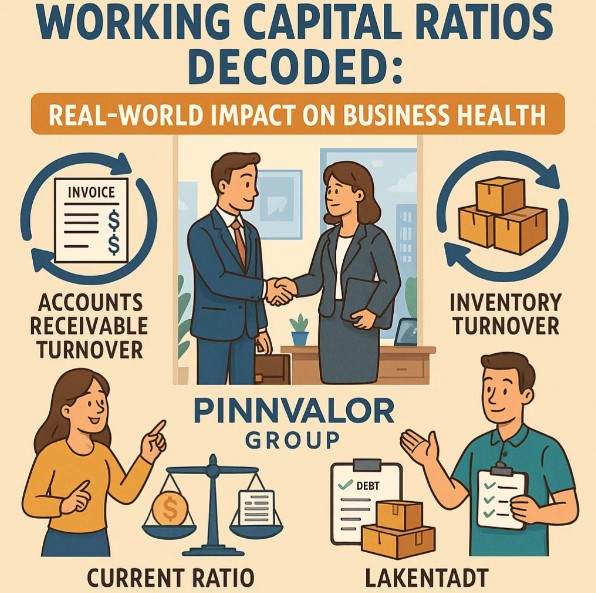
Working Capital Ratios Decoded: Real-World Impact on Business Health
In today’s fast-paced business environment, liquidity is not just a financial metric—it’s a survival imperative. Working capital ratios, often seen as mere accounting indicators, actually reflect the operational pulse of a company. They reveal how efficiently a business is managing its short-term assets and liabilities and how well it can meet daily obligations.
These ratios go beyond the balance sheet—they are critical to vendor negotiations, investor confidence, and cash flow management.
Could a single ratio predict your ability to weather financial storms?
Working capital isn’t just about paying bills—it's about fueling growth. The better you manage it, the more resilient your business becomes.
Key Working Capital Ratios Explained
1. Current Ratio
Formula: Current Assets / Current Liabilities
Purpose: Measures a company’s ability to pay its short-term obligations using current assets.
A ratio above 1 indicates that the company can meet its liabilities, but a ratio too high may suggest underutilized assets. In real-world scenarios, lenders often look for a current ratio between 1.5 and 2 for comfort.
2. Quick Ratio (Acid-Test Ratio)
Formula: (Current Assets – Inventory) / Current Liabilities
Purpose: Measures immediate short-term liquidity without relying on inventory.
Useful in industries where inventory turnover is slow, such as heavy machinery or luxury retail. A low quick ratio may be a red flag during periods of tight credit or slow sales.
3. Working Capital Turnover Ratio
Formula: Net Sales / Average Working Capital
Purpose: Assesses how efficiently a company is using its working capital to generate revenue.
A higher ratio implies better efficiency, but if too high, it may indicate aggressive short-term financing or insufficient working capital buffer.
4. Days Working Capital
Formula: (Working Capital / Sales) × 365
Purpose: Indicates how many days it takes to turn working capital into revenue.
This ratio can uncover cash flow bottlenecks in real terms—critical in seasonal or project-based industries.
Real-World Implications of Working Capital Ratios
1. Operational Efficiency
Efficient working capital management ensures that a business can function smoothly without resorting to emergency funding. For example, a retail chain with tight working capital must turn inventory quickly, or it risks liquidity issues that could delay vendor payments.
2. Investor and Lender Perception
Lenders and investors rely on these ratios to assess creditworthiness. A deteriorating current or quick ratio can lead to tighter lending terms or even loan rejections. On the other hand, improving trends in working capital efficiency can attract investment.
3. Supplier and Customer Relations
If a business consistently delays payments due to poor working capital, it risks damaging supplier relationships. Likewise, insufficient liquidity can affect the ability to fulfill large customer orders on time.
4. Crisis Readiness
During economic downturns or demand slumps, companies with stronger liquidity ratios are more resilient. Many businesses that survived COVID-19 had robust working capital structures that gave them breathing room.

Industry-Wise Benchmarking: No One-Size-Fits-All
Working capital ratio norms vary drastically across industries:
- Retail: High inventory levels mean current ratios may be high, but quick ratios lower.
- Tech Firms: Often have low inventories and high receivables, so quick ratios may be strong.
- Manufacturing: Need significant working capital due to supply chain and production cycle times.
Thus, interpreting these ratios must be context-specific.
Improving Working Capital Health: Practical Tips
- Streamline Receivables: Enforce tighter credit terms and follow up rigorously.
- Manage Payables Smartly: Negotiate better terms without hurting supplier trust.
- Inventory Optimization: Use demand forecasting and just-in-time practices.
- Cash Flow Forecasting: Regularly project cash needs to avoid surprises.
Conclusion: Reading Between the Ratios
Working capital ratios may seem like static figures on a financial statement, but their implications ripple throughout a business. From securing funding to sustaining day-to-day operations, these ratios help gauge not just liquidity but also strategic readiness.
Understanding and optimizing them can be the difference between thriving and merely surviving in competitive markets.
